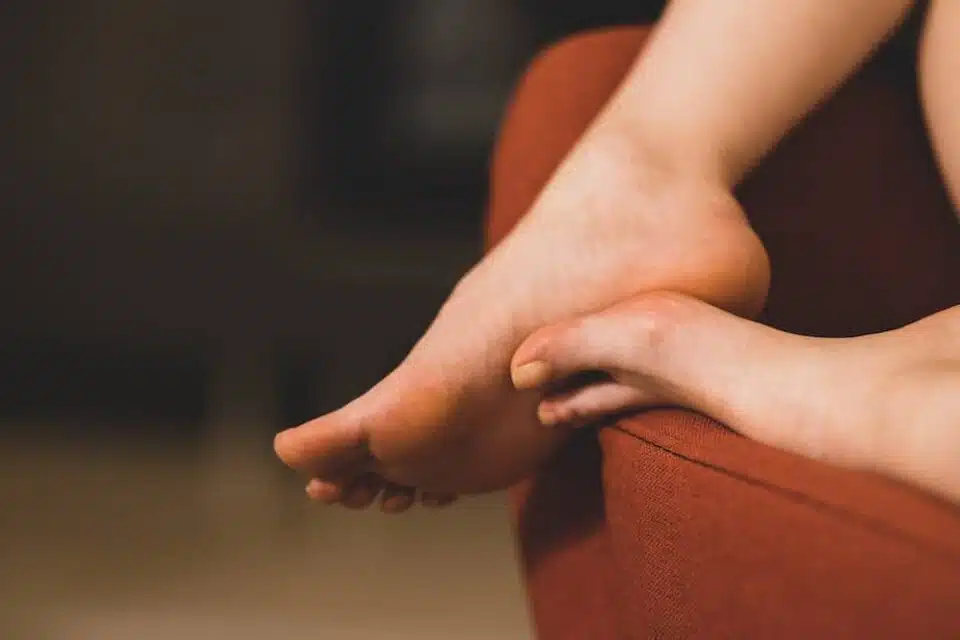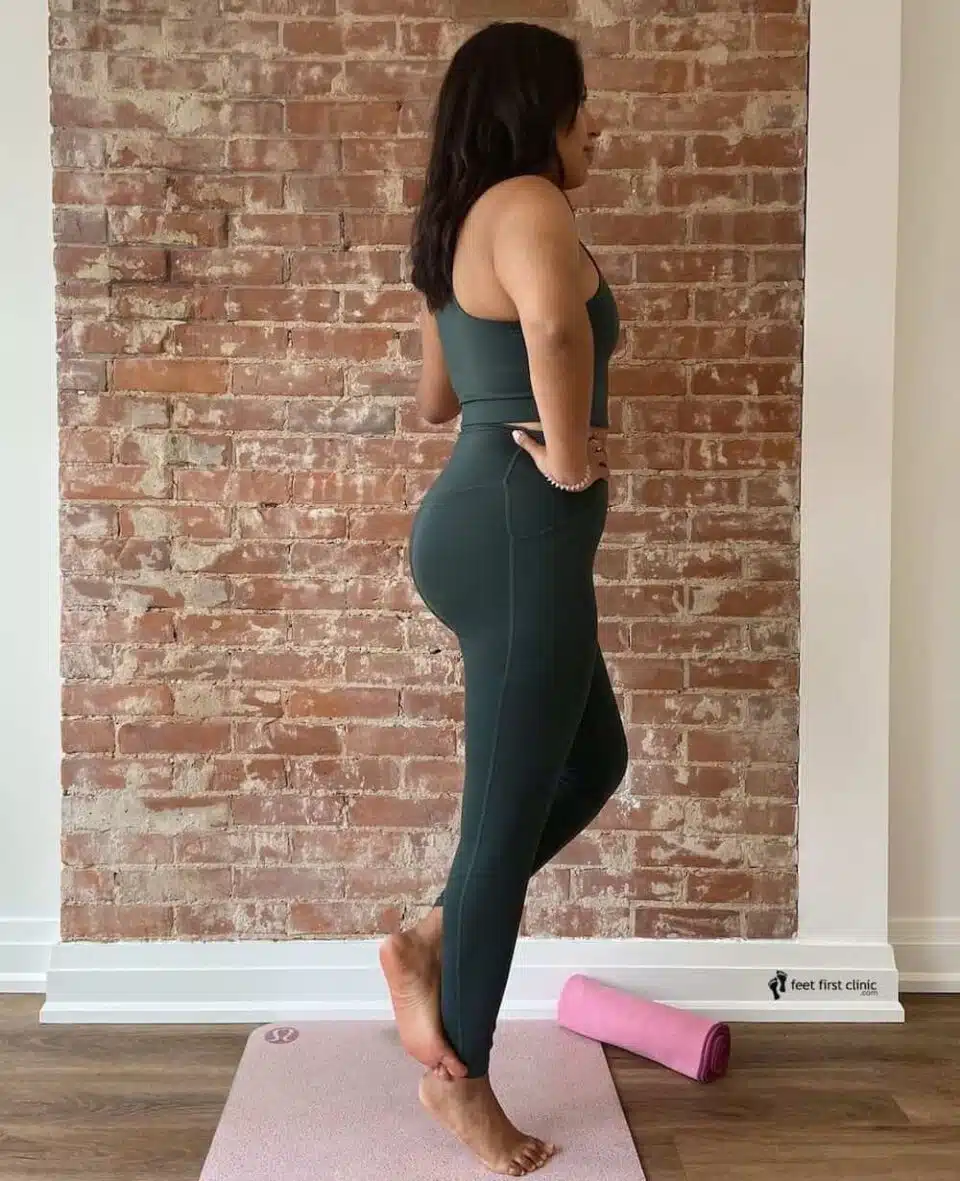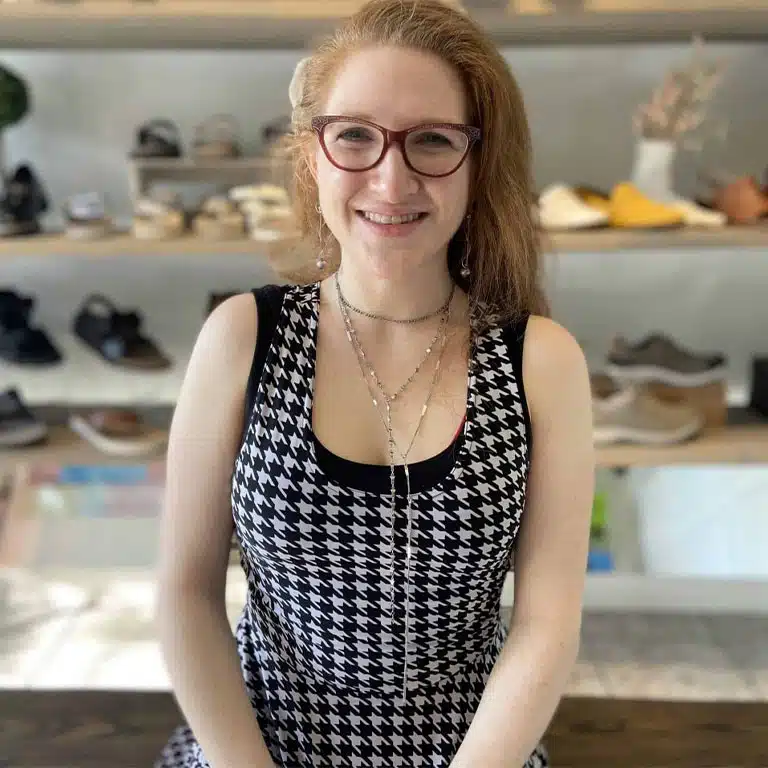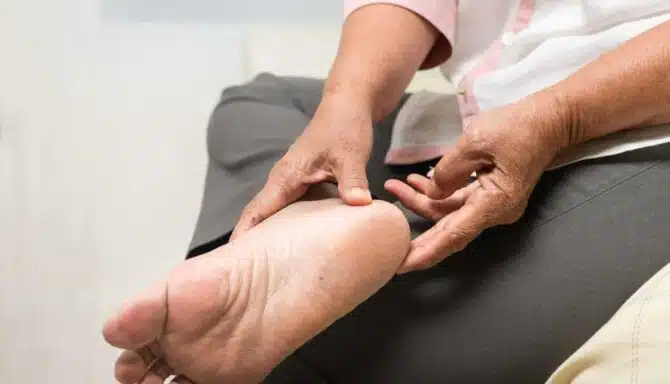Heel pain is one of the most common types of foot discomfort. The heel, aka the cushion of our feet, consistently is the greatest bearer of weight and impact in our lower legs. Our heels are the first point of contact with the ground whenever we move, so keeping the muscles and tendons in a good place is critical.
Fortunately, heel pain is also quite manageable and treatable (in most cases) at home. Staying healthy and pain-free can be a feeling we take for granted. If you experience heel pain, let’s get you back healthy ASAP.
Below, we outline heel pain causes, heel pain at-home treatments, and heel pain prevention to help get you back on your feet (and stay that way).
Causes of heel pain
There are several causes of heel pain, ranging from your footwear to what you do for a living. Depending on your condition, there may be a single or multiple contributing causes of heel pain.
Possible causes include:
- Wearing unsupported shoes
- Overtraining or not allowing for adequate rest between activities
- Abnormal gait
- Poor foot posture
- Increase time on your feet
- Weight/pregnancy
- Participation in high-impact sports
- A slip or fall
- Occupations that require prolonged standing or walking
Heel conditions
Plantar fasciitis
Plantar fasciitis is the most common reason for heel pain. This foot condition impacts the plantar fascia, the band of tissues at the bottom of your foot. With plantar fasciitis, the group of tissues becomes inflamed and damaged from constant wear and tear over time. Pain can be intense in the morning after prolonged inactivity (passive) or extended use (overuse).
Heel spur
A heel spur is a symptom of an underlying foot condition, osteoarthritis or plantar fasciitis. Your body’s response to repetitive microtraumas is to calcify or build new bone. Over time, calcification creates an abnormal, bony protrusion in the heel. Walking, jumping, and running are all exercises that can cause damage to your heel over time and result in heel spurs.
Haglund’s deformity
Like a heel spur, Haglund’s deformity is a bony protrusion. The difference lies in the where. Haglund’s deformity targets the back of the heel along the Achilles and not the underside of the foot. The foot condition affects where the Achilles tendon and heel meet. The bony growth can further cause inflammation of a small sac between the tendon and bone (the bursa).
Any activity or footwear that can aggravate the heel could be a culprit. Skates, ski boots, running shoes, and the like can irritate the heel and cause Haglund’s. Unlike many foot conditions, you can see Haglund’s deformity. A small bump is visible along the Achilles towards the base of the heel.
Achilles tendonitis
Above the heel is the Achilles tendon. By association, damage to the Achilles tendon can result in the back of the foot and bottom of foot pain. Achilles tendonitis is overuse and injury to the Achilles tendon. Repetitive use causes swelling and inflammation, followed by stiffness. As a result, the stiffness may cause imbalances in your lower leg and add stress to your heel.
Skin conditions
Not all heel conditions are internal. Cracked heels are a skin condition where the skin dries and flakes. Cracked heels are and can be painful if left untreated. Relatedly, the heel can also develop blisters, which could cause discomfort.
Heel pain at-home treatment
Rest
No treatment is complete without R&R, rest and relaxation. Aim to address the cause and stop whatever you’re doing to allow your heel pain to subside. Rest allows inflammation and swelling to subside and helps remove the stress on the muscles and tendons in the heel. In addition to rest, cold therapy can be effective. Using an icepack on the area can relieve sharp, intense pain, swelling, and inflammation.
Roll with a lacrosse ball
An effective at-home treatment method for heel pain, specifically plantar fasciitis, is to roll the underside of your foot with a ball. A lacrosse ball is optimal as it’s rigid. The method is to sit down and lightly apply pressure to the ball with your heel. Use a circular motion to target specific points in the heel, and repeat for 1-2 minutes.
The purpose behind rolling is to help loosen the muscles and tendons in the heel. The cause of heel pain is often tightness and stiffness in the foot tissue. Rolling promotes blood flow and recovery.
Calf stretches
Heel and foot pain can stem from tight calves. Calf stretches are a simple and accessible way to loosen muscles in your lower leg. All you need is a wall or something sturdy to lean on. Place one foot in front of you against the wall and the other directly behind you. Then place your hands on the wall, bend your front knee and lean forward while keeping your back leg straight with your back foot planted flat on the floor. Hold for 30-60 seconds on each leg. You should feel the stretch along the back of the lower part of your leg (the calf muscles).
Although some research suggests minimal efficacy for calf stretches on heel pain, further study finds strengthening and stretching exercise programs “reduced pain and improved gait in patients with PF.”
Skincare
For skin-related heel pain, like cracked heels or blisters, use a moisturizer or cover up your blisters until they heal.
Products we carry in-store here at Toronto’s Feet First Clinic include:
- Gehwol Callus Cream
- Dermal Therapy Heel Care Cream
- Gehwol Med Salve for Cracked Heels
Heel pain prevention
Supportive footwear
Proper footwear is critical to foot and lower leg health. Supportive footwear helps distribute weight evenly across your feet. Regardless of the activity, it would help if you used footwear designed for your feet and intended purpose. For instance, wear running shoes when running, and wear cushioned shoes or boots if you’re on your feet at work or home. Depending on your arch type, you may also require specific shoes.
Orthotics
Custom orthotics are customized shoe inserts that support the unique structures of our feet. Orthotics correct and accommodate biomechanical abnormalities, foot deformities, and a variety of joint and muscle conditions to improve your gait and manage pain. Orthotic’s purpose is to distribute the force and pressure placed on our muscles and joints when we move. Even weight distribution alleviates strain and pain in our feet and, thus, the rest of our bodies.
Rest and recovery
If you feel pains and niggles coming on, take the proper rest and recovery to allow your body to repair itself. Doing too much, too soon, can outpace your body’s ability to recover and repair itself. Extra rest is essential when doing high-impact activities or ramping up on an activity too quickly.
Regular stretching
Following a regular stretching routine, even for just a few minutes daily, is a positive habit for building lower leg and foot health. You could even incorporate stretches throughout your day, for example, when cooking a meal or brushing your teeth.
A healthy diet and exercise routine
Aiming to maintain a healthy diet and following an exercise routine can help prevent sudden weight loss. Obesity can cause additional strain on your feet, including your heels, due to the extra load your body bears.









